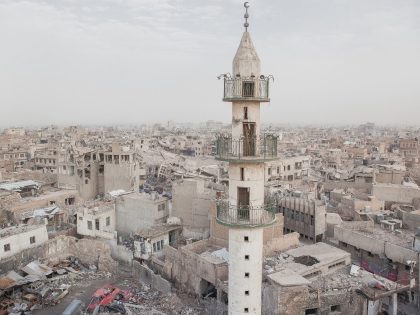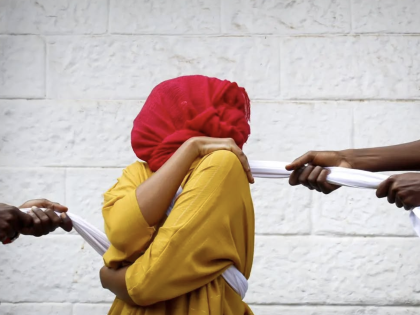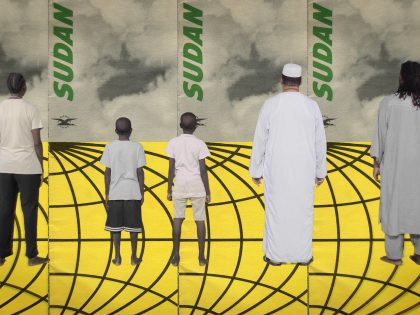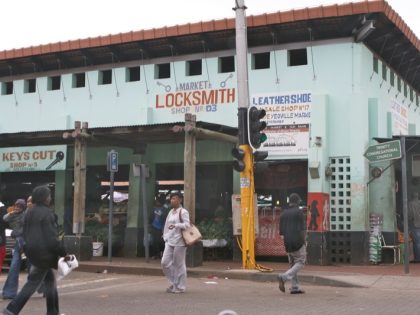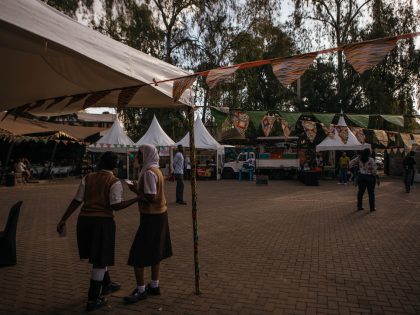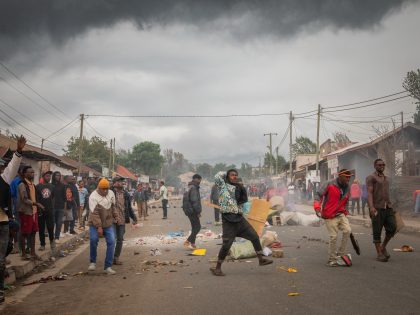Akin Omotoso’s Country
A recurring theme in director Akin Omotoso's films is the fraught postapartheid relationship between Nigerian migrants and their South African hosts.

A still from "Man on Ground' directed by Omotoso.
A recurring theme in director Akin Omotoso’s films is the fraught postapartheid relationship between Nigerian migrants and their South African hosts. Part of the reason is autobiographical: Akin is the son of Kole, the literary professor, who moved his young family, including his then teenage son, to South Africa in the early 1990s from Nigeria. (Akin’s mother was from Barbados.) The result is that Omotoso is as much Nigerian as he is South African.
In Omotoso’s first feature film, “God is African” (2003), set in 1995, the fictional nephew of the murdered Nigerian writer and activist Ken Saro Wiwa fights inaction and opposition from fellow students at his Johannesburg university to publicize the fate of Saro Wiwa and other Ogoni activists who are about to be executed by Nigerian junta. The South African characters, despite their very recent experiences of oppression, show little empathy for their Nigerian counterparts. Now, twelve years later, his second feature, “Man on Ground,” covers related themes. In that first film, the violence plays out somewhere else; this time, the violence plays out within the frames of the film, in Johannesburg. (The characters also share names with those in the first film, and some of the actors return–Hakeen Kae Kazim, who started his career in “God is African” and is now a regular in Hollywood and on American network TV, stars in the new film too.)
Principally, the film revolves around two brothers, Ade and Femi. Ade (Kae Kazim), a successful lawyer based in London, travels to Johannesburg for a conference with his wife. He also arranges to meet his estranged brother, Femi (played by Fabian Adeoye Lojede). The brothers could not be more different: the latter is a former student activist, who, after being tortured (seemingly by the Abacha regime), fled to South Africa where he ekes out a living doing odd jobs in restaurants, sells hair extensions and works on construction sites. Femi does not turn up for the meeting, but soon, his South African fiance, Zodwa, turns up at Ade’s hotel to report that Femi is missing. He had gone to work in a township on the edge of Johannesburg. We learn that this is the weekend during which the pogroms against African migrants to South Africa took place–which so happens to be concentrated around said township (the film is loosely based on real events). Femi delays his departure from South Africa and goes, together with Zodwa, in search of Ade.
What follows is a thriller of sorts. The use of music, recurring scenes of fire and matches being lit, editing cuts building anticipation (Aryan Kaganof, familiar to readers of this blog, edited the film) and flashback scenes (to the brothers’ joint childhood and the events leading up to Femi’s disappearance) all add to the suspense and fills out the plot, pushing the story forward. We, of course, know the outcome: while the horrific porgroms shocked privileged South Africans who live outside that dividing line created by destitution, millions already living within those confining walls of extreme poverty were not surprised that resentments towards the makwerekwere (a slur meaning”foreigners” from other parts of Africa) boiled over, especially because heat was added by political instigators who stood to gain. But the circumstances of and motives for Femi’s death are not so clear cut.
Though the film does not explore the relationship between Ade and Zodwa–they don’t say much, apart from Zodwa repeating Femi’s accusations of a feud with Ade–it is clear that they reflect Omotoso’s longtime interest in the relationship between Nigerians and South Africans after Apartheid. Zodwa (Femi’s fiance) in particular, is an interesting character, as is her relationship with Femi: from a chance encounter with Femi, they became a couple, lovers, expectant parents and engaged to be married before he disappeared. The scenes between Zodwa and Femi are tender as they whisper sweet nothings to each other or repeat the same word in Zulu and Yoruba. They also represent a different kind of future or encounter between South Africans and other Africans.
This story is, of course, all probable. There are lots of “mixed” South African-Nigerian couples in big cities like Johannesburg and Cape Town, but there is also a way in which this films tells a story that reflects Omotoso’s wish. Most of the other South Africans Femi and later Ade encounter are xenophobes–with the exception of Zodwa, Ade’s boss (central to the film’s outcome) and, crucially, a policewoman, who, in a flashback (or fantasy?) scene explains Ade’s rights to him in a very friendly, personable and helpful tone. The policewoman’s attitude is striking given the reputation of the South African authorities towards migrants and refugees from African states (in contrast to white migrants) are notoriously condescending at best, and violent at worst. But perhaps, these insightful scenes also wink at Omotoso’to politics: imagining a different kind of future for intra-African relationships inside South Africa for the African diaspora. I find Omotoso’s work refreshing for not shying away from hard questions – in this case migration, xenophobia, corruption, state inaction and political opportunism – while still creating and producing work that can be entertaining, gripping and accessible.
* Man on Ground screens Saturday night at the Brooklyn Academy of Music.











